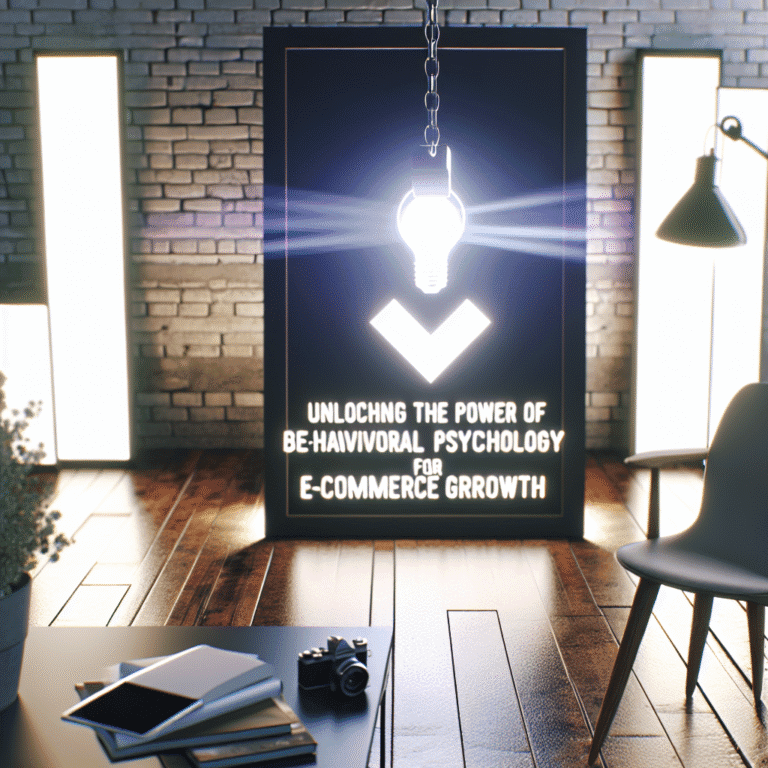The Secrets Behind Why We Really Shop Online
You've got the traffic and a website that loads faster than you can say “checkout now.” Yet, the sales still aren’t piling up. And it’s more likely down to our dear friend, persuasion, rather than promotion codes.
The real secret sauce? Human psychology, not just logical logistics. People don’t shop with their heads; they shop with their hearts, wrapped up in a nice little bundle of justifications. Abandoning a cart isn’t really about the product being naff. Something simply didn’t feel right.
Let’s take a stroll through 12 nifty psychological tricks used by top-notch online stores. When done right, they build solid trust and wallet-opening happiness.
Why Psychology Matters in Online Shopping
In theory, the world of online shopping looks neat and tidy. But real life isn’t all homepage skip-to-the-checkout hops. People are impulsive and they change their minds over unexpected tax fees. How dare they?
Many shopping decisions, about 95%, aren’t made by thinking. They’re made by feeling. And even small changes in trust or a little urgency can make sales spring to life.
Clever companies have added carefully timed social proof to boost trust. And surprise, surprise, revenue per visitor went up by 13% with customer photos and reviews. Fancy tech and big ad spends don’t build loyalty. Human nature does.
Now, let’s look at those 12 nudge strategies that get people to click, commit, and cough up cash faster than you can clear your email inbox.
Simple Things Sell
A smooth online shopping experience should feel like slicing through butter. If it’s confusing, people will simply click off.
How to make it simple:
- Use large, easy-to-read fonts
- Clear buttons that practically beg, “Click me!”
- Bullet points and short, snappy sentences
- Make your site fast, or risk losing 7% sales per second it dawdles
Keep it simple and people will trust you, like a comfy old pair of slippers. And trust makes sales happen.
Scarcity and Urgency
We all hate missing out. When your site whispers, “Hurry up, there's not much left,” people listen.
Sneaky tactics:
- Show what items are low in stock
- Limited-time offers with countdowns
- Gifts or bonuses at checkout
One clothing brand upped its sales by 27% just by adding urgency suggestions at checkout.
Let Your Customers Do the Talking
We copy each other all the time. Seeing others happy with a product reassures us it's worth our time and money.
Ways to encourage social proof:
- Loads of customer reviews
- Photos and stories from users
- Badges showing stellar ratings
According to BrightLocal, 88% of us trust online reviews as much as friends. So, let your happy customers be your star sales team.
Instant Credibility with Authority
When recognised voices or places support your brand, folks are reassured without needing to dig.
Ways to sprinkle authority:
- Feature “as seen in” with well-known logos
- Mention experts and certifications
- Use influencers and famous endorsements
Authority shortcuts the trust-building process. Instead of shouting “trust me,” let respected names do the talking.
Get Them to Say Small Yeses
People love sticking with past choices. That’s why little commitments make full purchases more likely.
How to gently guide them:
- Provide quiz-style product recommendations
- Let users save products for later
- Offer email signups for previews or guides
Small steps that build a narrative make it harder to change course, nudging real purchases.
Highlight What They Might Miss
Losing something is twice as painful as gaining something nice. It's science.
Remind them what they'll lose if they leave:
- “You're about to miss 10% off; checkout now”
- “Leave now? Goodbye welcome bonus”
- "Don't lose your spot for next-day delivery"
Help 'em avoid regret, and you've got a powerful sale on your hands.
Set the Context for Value with Anchoring
People need something to compare to figure out value. Show the high-end option first, and the regular ones will look like bargains.
Make anchoring work:
- Display your top product first
- Offer a “decoy” middle tier
- Create bundles that make single items look like a steal
That £50 charger seems a right bargain next to a £200 stand. It’s not trickery, it’s just how we value things.
Presentation Matters
Same product, different story. How you frame things changes perceptions.
Improve the framing:
- “Free returns” sounds better than “Return process available”
- “Over 20,000 happy buyers” beats “Trusted by thousands”
- "Get a £10 reward on each £50 spent” instead of “20% back”
Make the truth feel good, not just stating the facts.
Build Good Relationships with Reciprocity
If you give folks something upfront, they usually feel like giving back. Good manners dictate.
Smart ways to offer value:
- Free content or size guides
- Offer discounts after engagement
- Toss a little surprise gift at checkout
Be generous, gain trust, and watch the sales roll in.
Personalise the Experience
Everyone likes to be seen, but no one likes being watched. So, personalise your site responsibly.
Make it feel personal:
- Suggest products based on previous visits
- Allow users to set preferences
- Use buyer segment-focused copy
McKinsey says personalised shopping can hike revenue by 20%. It works, so long as it doesn’t feel stalkerish.
Create Memories to Fuel Loyalty
Surprises make things memorable. Throw in some unpredictable moments to create lasting impact.
Ideas for delightful surprises:
- An unexpected gift after purchase
- A handwritten note with the package
- A “just because” reward for regulars
Emotional connections last longer than a simple transaction.
Let Them Be Part of a Story
Folks aren’t buying just your product; they’re buying into the version of themselves they want to be.
Tell an enticing story:
- Mirror customer aspirations
- Use real customers, not just star ratings
- Show visuals that are relatable and authentic
People don’t follow brands. They follow an identity. Let your site reflect the dream your customer has in mind.
Wrapping It Up: Using the Heartstrings
When it comes to growing your online store, it isn’t about just adding more gadgets or getting more traffic. It’s about making real connections with people behind those clicks.
Shoppers don’t pick the most sensible option. They pick what feels right. Make your brand the one that gives them the warm fuzzies.
Take these psychology tricks and sprinkle them with fun and ethics. Don’t just fine-tune sales funnels. Tailor them for what folks truly crave: connection, joy, and trust.
Because when it comes to shopping, we might read the claims with our heads, but we checkout feeling good with our hearts.





